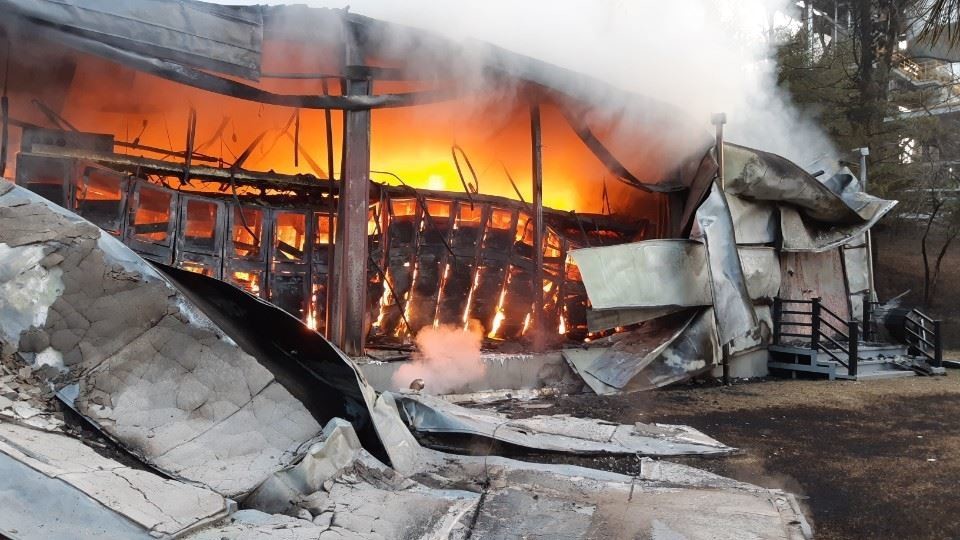
Safety Stand-Down of the ESS Industry
From time to time a singular event stands as a bend in the road when looking back in time. The event changed the future direction of an industry. The fire & explosion at a utility lithium-ion battery site in Surprise, Arizona on April 19th, 2019 should stand as that bell wether event for the ESS industry. In the fire service when a significant near miss incident, significant injury, or death(s) occur there is a call for a "Safety Stand-down". This is where all non-emergency responses are curtailed, all training stops, and focus all efforts on where the errors occurred, what lessons can be learned, and where policy needs creation or modification. This can be for the specific department, a region, or nation-wide depending on the event.
This is that time for the ESS industry.
With the current state of ESS safety Codes & Standards and supporting research being a few years behind the rapid growth and pace of installations, there stands a unique opportunity for the ESS industry to take a similar approach to this incident as a sign of corporate responsibility and to ensure systems are installed with the best knowledge available, not just to the currently adopted codes.
This is the time to take a stand to “Not Compete on Safety”.
There is no advantage to keeping safety-related best practices as “secret sauce” when an incident such as the Arizona event can have such a significant effect industry-wide. If the success of some can raise the tide for all, it may take only a single fatality tied to an ESS failure to drain the water from under all in the form of significant restrictions.
Many ESS manufacturers are attempting to understand and execute the UL 9540a Large Scale Fire Test methodology. Unfortunately, the results are proprietary and may result in inconsistent interpretation when presented for approval to AHJ’s with varying degrees of knowledge on ESS safety. If there are simple design features that result in better performance of a fire detection or suppression system, HVAC or exhaust, these should be publicly shared to help ensure safe installations for all. Additionally, Federal funding for large scale fire testing should be provided to obtain this valuable non-proprietary safety data to help ESS system designers understand for example the effects of cabinet design on agent or water penetration, and to assist fire protection engineers design fire protection systems that are effective.
With the ESA launching the Corporate Responsibility Initiative at its recent Energy Storage Conference they have taken a great first step at developing safety best practices. Taking that initiative a few steps further, here are some recommendations (not in order of importance) to ensure safe operations:
1. Add to the signed ESA pledge a promise to “Not Compete on Safety”.
2. Regardless of currently adopted fire code, design and build systems to the upcoming 2021 International Fire Code - chapt 12 (see approved proposal F203). Support early adoption of this section by AHJ's.
3. Install water-based suppression system as back-up to any inert or clean agent primary suppression system.
4. Install early-detection off gas sensors at the rack level tied into BMS.
5. Install at a safe location manual over-ride exhaust controls to allow evacuation of flammable gasses prior to access by any personnel.
6. Support training of first responders to better understand tactics and strategies for Li-ion ESS responses. Some installations will be in occupied structures.
These comments do not represent a specific organization, rather are solely those of the author; a fire & electrical safety professional involved in the ESS codes, standards and training community.
Guangzhou baolida Electrical materials Co.ltd insulating materials expert ,solar module expert
2yDeeply understand the purpose and requirements of standards and specifications, not just to pass third-party tests. but too many people just want Solve problems without considering methods and consequences.
Technical Consultant NeoVolta NV14, Solar HESS
4yMore people are understanding the importance of the UL 9540 test method A
Matthew, Excellent article. Passive fire containment at the offending cell level is very effective to prevent cascading events. Designers may be interested to learn more about Lithium Prevent from PyroPhobic Systems.
Solar Energy & Energy Storage SME, Systems Engineer, Engineering Manager
4yThe point is that if diligence and proper paradigms, such incidents can be rendered impossible. Clearly that did not happen here.
Principal at Silent Running
5yGreat piece, Matthew. I m in agreement that a complete and transparent debrief and mitigation analysis is needed. Your use of the term "bell-weather" was apt.